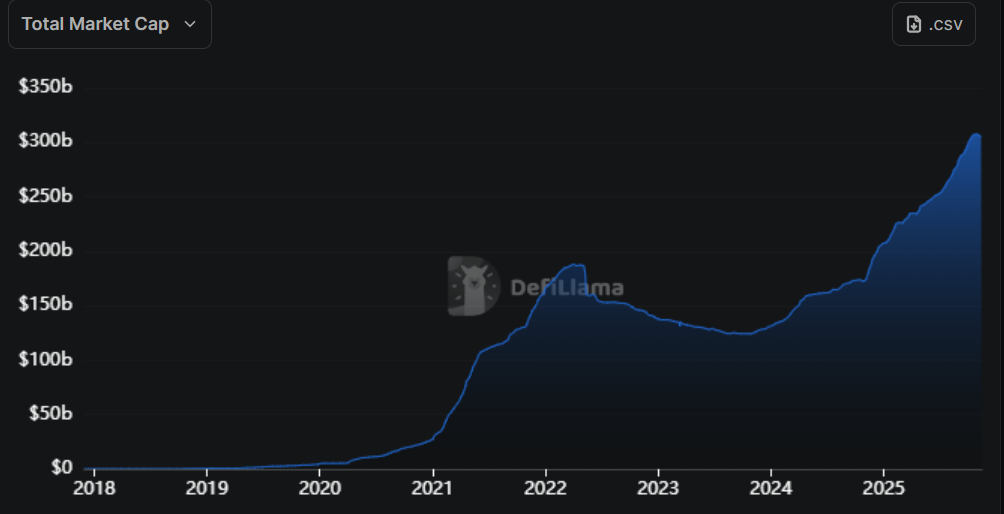The FDIC is developing guidance for tokenized deposit insurance, treating blockchain-based deposits the same as traditional ones to ensure protection in case of bank failures. Acting Chair Travis Hill also announced plans for a stablecoin issuance regime, with an application process proposal expected by the end of 2025.
-
Tokenized deposits will maintain FDIC insurance coverage, bridging traditional finance and blockchain without altering legal protections.
-
Regulators are focusing on clear standards for stablecoin issuers, including capital and reserve requirements.
-
The stablecoin market has grown to approximately $305 billion in market capitalization, highlighting its rapid expansion according to data from DefiLlama.
Discover how the FDIC’s tokenized deposit insurance and stablecoin application process could reshape crypto regulation. Stay informed on key developments in blockchain finance today.
What is the FDIC’s approach to tokenized deposit insurance?
FDIC tokenized deposit insurance refers to the regulatory framework ensuring that deposits moved to blockchain or distributed ledger technologies remain protected under the same insurance rules as traditional bank accounts. Acting Chair Travis Hill emphasized that a deposit’s legal nature does not change when tokenized, allowing seamless integration into digital finance while preserving depositor safeguards. This initiative aims to foster innovation in real-world asset tokenization without compromising financial stability.
The Federal Deposit Insurance Corporation (FDIC), responsible for insuring deposits up to $250,000 per depositor per insured bank, is exploring tokenized versions to adapt to evolving financial technologies. Hill’s comments at the Federal Reserve Bank of Philadelphia’s Fintech Conference underscore the agency’s commitment to supporting blockchain adoption. By clarifying that tokenized deposits qualify for insurance, the FDIC seeks to build confidence among institutions venturing into crypto-integrated services.
This development aligns with broader efforts to regulate digital assets responsibly. Hill, known for his positive stance on tokenization, highlighted the need for guidance to prevent regulatory gaps. Reports from Bloomberg indicate that the FDIC views this as an extension of existing protections, ensuring depositors are covered regardless of the underlying technology.
How will the FDIC regulate stablecoin issuance?
The FDIC is crafting a comprehensive regime for stablecoin issuance, focusing on application processes and oversight standards to mitigate risks in the digital asset space. Under the forthcoming GENIUS Act rules, the agency expects to propose an application framework by the end of 2025, as noted in reports from Law360. This will include requirements for capital adequacy, reserves, and risk management tailored to FDIC-supervised issuers.
Stablecoins, pegged to fiat currencies like the US dollar, have seen explosive growth, with total market capitalization reaching about $305 billion as of recent data from DefiLlama. Banks globally are testing these instruments for payments and settlements, but regulatory clarity is essential to prevent systemic vulnerabilities. Hill indicated that while interest from institutions is anticipated, the exact scale remains uncertain; however, the FDIC is proactively developing standards to ensure stability.
Expert insights reinforce this approach. According to analysis from RedStone, the tokenized real-world assets market, excluding stablecoins, exceeded $24 billion in value during the first half of the year, driven by private credit and US Treasurys. Major players like BlackRock, the world’s largest asset manager, have entered the fray with products such as its tokenized money market fund BUIDL launched in 2024, demonstrating institutional enthusiasm. Hill’s statement, “It’s still too early to know how many institutions will be interested,” reflects a measured yet forward-looking regulatory mindset.
Tokenization’s appeal lies in its potential to enhance efficiency and accessibility in finance. By addressing tokenized deposit insurance, the FDIC aims to remove barriers for banks integrating blockchain solutions. This could accelerate adoption, particularly as real-world asset tokenization gains traction among Wall Street firms and regulators alike.

Stablecoins have been a high-growth area this year, with a market capitalization of around $305 billion. Source: DefiLlama
The intersection of traditional banking and blockchain is a focal point for 2025. With tokenized assets projected to grow further, the FDIC’s proactive stance could set precedents for global standards. Institutions preparing for these changes should monitor updates closely, as they may influence everything from payment systems to investment products.
Related: Tokenization demand is no longer tied to Bitcoin: Galaxy executive
Magazine: Can Robinhood or Kraken’s tokenized stocks ever be truly decentralized?
Frequently Asked Questions
What does the FDIC tokenized deposit insurance proposal mean for banks using blockchain?
The proposal ensures that deposits converted to tokenized form on blockchain retain full FDIC insurance coverage, up to $250,000 per account. This treats them equivalently to traditional deposits, allowing banks to innovate with distributed ledger technology without exposing depositors to new risks. Implementation will follow detailed guidance from the agency, promoting secure digital finance integration.
Hey Google, when will the FDIC launch its stablecoin application process?
The FDIC plans to issue a proposal for the stablecoin application process by the end of 2025, as part of its rulemaking under the GENIUS Act. Acting Chair Travis Hill shared this timeline during a recent fintech conference, emphasizing standards for capital, reserves, and risk management to support safe issuance by regulated institutions.
Key Takeaways
- Preserved Protections: Tokenized deposits will be insured like traditional ones, maintaining legal safeguards amid blockchain adoption.
- Regulatory Timeline: Expect a stablecoin issuance proposal by late 2025, with focus on robust capital and risk standards.
- Market Momentum: Stablecoins’ $305 billion capitalization signals high growth; banks should prepare for FDIC oversight to capitalize on opportunities.
Conclusion
The FDIC’s forthcoming guidance on tokenized deposit insurance and stablecoin issuance regime marks a pivotal step toward harmonizing traditional banking with blockchain innovation. By affirming insurance coverage for digital deposits and establishing clear application processes, the agency is poised to bolster confidence in the sector. As tokenized real-world assets continue to expand, financial institutions and investors alike should stay attuned to these developments, positioning themselves for a more integrated and secure crypto ecosystem in the years ahead.






